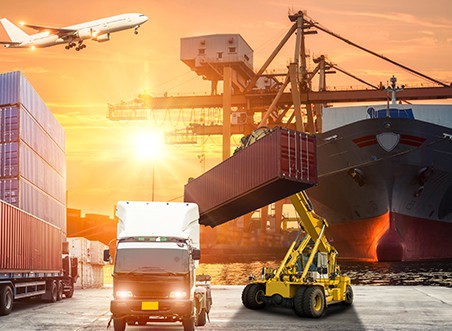Before proceeding with product delivery for your customers, you need to make sure that you first have stock in your inventory. Once proper inventory management is done, you should fulfill customers’ orders and ship the products sold. This is how everything works at Fulfillment by Amazon (FBA). However, if you are using Fulfillment by Merchant (FBM), you should be aware of what mode of transportation – ocean freight vs. air freight – suits your business best when shipping your Amazon products. Picking the right carrier could mean saving a huge chunk of your earnings.
Ocean Freight vs. Air Freight
There are two methods for shipping your Amazon products – Ocean freight and Air freight. The differences between the two laid out below are practically clear. By considering each one, you can determine which one is appropriate for your shipping and will bring higher profits.
Cost
Ocean freight rates are significantly lower than air freight. That is why it has become the best option for most businesses. However, ocean freight isn’t always the best choice when you have a small shipment. Remember that as your shipment gets smaller, the cost gets cheaper in return. You have also to take into consideration other factors that can add up to the entire cost such as custom and destination fees. With a smaller shipment, air freight can sometimes end up being less costly.
Speed
When it comes to speed, air freight is undeniably much faster than ocean freight. This is because ships have a lot of distance to travel rather than airplanes. Additionally, air freight makes for the best solution when you are transporting products that are of a high-value, sensitive and expire quickly. So, if your product belongs to any of these, go with air freight.
Reliability
Air freight is more reliable than ocean carriers, chiefly because airlines usually have daily flights back and forth between major cities and countries across the globe. In terms of bad weather, flights do get delayed but it doesn’t cause much of an inconvenience compared to a delayed ocean freight shipment. Ocean lines follow weekly schedules so missing the cutoff at a seaport could result in a week’s worth of delay, and that could lead to some significant loses.
Storage and Capacity
It helps to be informed about the limitations imposed by air and shipping lines. While ocean freight can accommodate bigger and heavier shipment, air freight is suitable for smaller and lighter loads. If you are shipping large quantities of products, consider the ocean freight.
Safety and Security of Goods
Your parcels have minimal risk of getting damaged with air freights. In terms of handling, storing and securing your product, airport regulations put a high priority on that, ensuring that all goods reach its destination safe and sound.
Bottomline: Ocean Freight vs. Air Freight
Ocean freight generates larger profit margins since you can ship as many products as you have for a single shipment at an affordable rate. The downside is that it takes longer to reach the Amazon warehouse, and that means longer waiting time for your customers.
On the other hand, while airfreight is costlier than ocean freight, the former promises speedy and secured shipment. This, as a result, improves your customer service and encourages customers to do repeated business with you.
Whether it is ocean freight or air freight, the final decision is up to you since you are the one handling your very own Amazon business. There is no one size fits all when it comes to choosing the right shipment method for your Amazon business. What works for one business may not entirely work for you. The key here is to use a transport that is aligned with your business goals and is more convenient for you as a seller.





